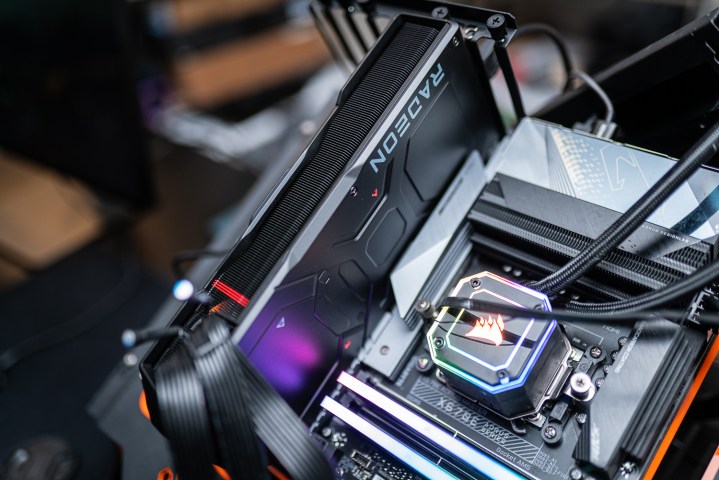
Rumor has it that AMD may have decided not to launch any high-end GPUs in the next generation of graphics cards, meaning RDNA 4. However, this freshly leaked diagram gives us some insight into what could have been — or perhaps, what will be — if AMD’s best graphics card of the next generation was made. It appears that AMD’s next-gen architecture is a lot more complex than RDNA 3.
The diagram comes from YouTuber Moore’s Law is Dead, who, as always, cites his own anonymous sources. It’s only a partial diagram, but even that quick look into the architecture of RDNA 4 tells us a lot. While not sure which GPU this is, Moore’s Law Is Dead refers to it as Navi 4C, and all signs point to it being AMD’s top GPU for the next generation. Still, it’s unclear if this new naming convention refers to Navi 41 or perhaps Navi 42, as Navi X and Navi M have also been mentioned recently.
Looking at the diagram reveals a large package substrate with four dies. One is a Multimedia and I/O die (MID), while the other three are Active Interposer Dies (AIDs), the latter of which seem to be able to house up to 3 Shader Engine Dies (SEDs). Moore’s Law is Dead also speculates that the memory controller dies are missing from this diagram, but they should be present on each side — however, it’s unclear how many exactly we’d be looking at here. Lastly, Infinity Cache dies would also most probably be present.
All in all, the Navi 4C GPU would have had anywhere between 13 to 20 chiplets. This would have meant a huge change from the current-gen chiplet design, as AMD seems to have split it and added more external interconnects. We’re still seeing multiples of the same components, such as memory cache dies (MCDs), but as Moore’s Law Is Dead notes, there are many more of them now, adding to the complexity of this new GPU architecture.

This complexity could spell good things for next-gen GPUs, but it also makes the entire design and manufacturing process a lot more difficult. AMD may have bitten more than it could chew with such a tight timeline, assuming that RDNA 4 is around a year away from now. It could be that this design will be shelved until RDNA 5 — it seems unlikely that AMD will quit the GPU race entirely and settle for the mainstream segment, although that would make some sense, too.
It’s hard to even begin to estimate the improvements brought on by this experimental architecture. AMD chose not to compete against Nvidia’s best GPU this time around, and many rumors point to it opting out of making high-end GPUs in the next generation. However, by the looks of it, once it does come back to making beastly GPUs, AMD might give Nvidia something to worry about.




